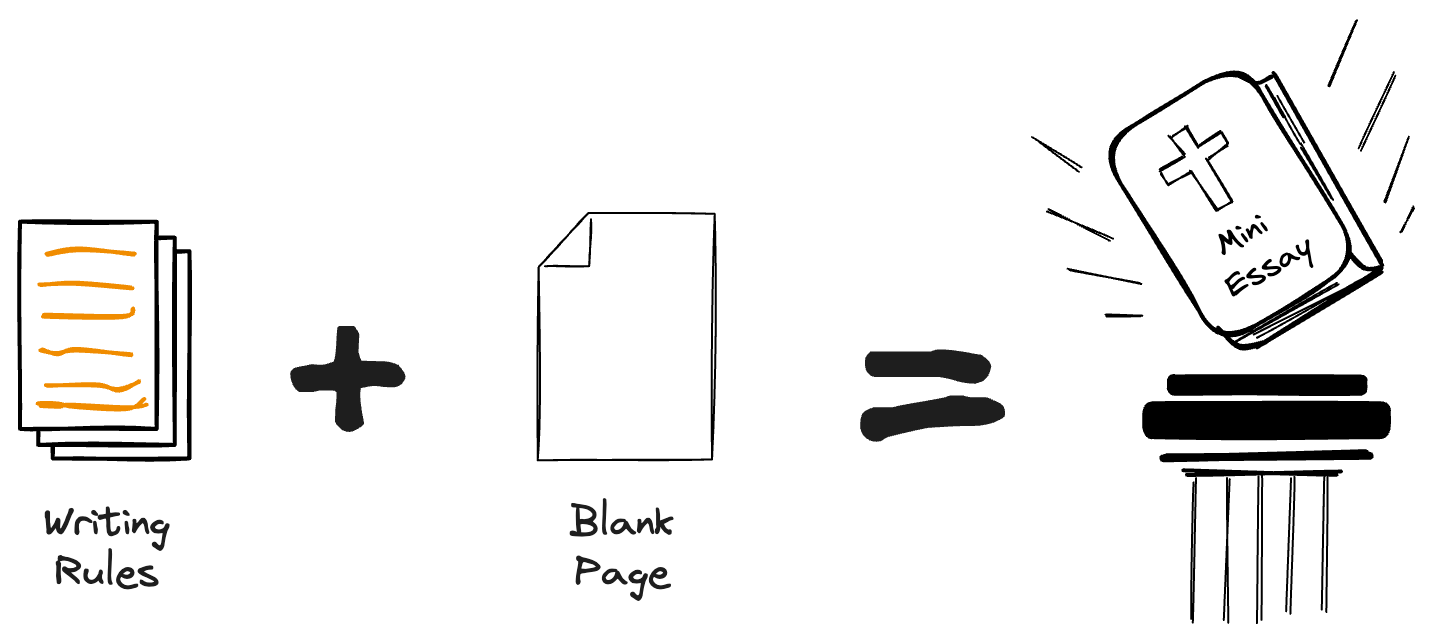Rules for writing a Mini-Essay:

Have you ever felt overwhelmed by the tyranny of the blank page? Are you wishing to incorporate writing into your life but have failed to do so consistently?
Recently, I started stacking another habit on top of my morning reading routine. Now, after reading, I take some time to reflect and write. My writing is guided by a few simple rules that help me stay focused. Here are the rules that help me produce 1 mini-essay per day:
- Stick to 1 idea and 1 idea only
- Keep it short:
- Time limit: 10-20 minutes
- Word limit: 100-500 words
- Page limit: The essay should be visible on one page without the need to scroll
- Keep the essays organized
- Use a Kanban board to track the process through all stages from raw idea to published
- Include Tags and Folders for easy retrieval
- Link to other ideas that are relevant (Maybe your own past posts)
- References (Where did you get this idea? What prompted it? Books, videos, articles)
- The three part structure:
- Intro
- Try any of the following: Introduce curiosity with a Hook / Be clear about the Premise / Use a bold statement / ask a provoking question / evoke strong emotions / throw the reader straight into the action by means of a story
- Body
- Answer the premise of the intro
- Optional: Try a Story Note (use story telling to bring a point across)
- Choose the point you’re trying to make
- Amplify the message by choosing an illustrative story
- For hard topics depersonalize the story by using non human characters or humor
- Conclusion
- Keep it short and simple (KISS) - 1 or 2 sentences
- Intro
- Feedback (3 sanity checks)
- Read the essay out loud to assess how it flows. This is an unreasonably powerful tool to quickly notice and change odd sentences
- Ask an AI to rate the essay & provide feedback on how to improve it
- Here’s my custom GPT - Mini Essay Critic
- Ask another person for feedback and written comments
- Optional: Wait a few days to let the idea simmer before returning to it with fresh eyes and doing a few last changes.
- Optional: Include an illustration
- Make a custom graphic for more important posts (with Excalidraw, Figma or Miro) or
- Use an existing graphic if
- Preserving precision of information is important (e.g. data plots) or
- Creating a custom graphic would be prohibitively time intensive
Following these simple rules can transform your writing routine into a structured and productive daily habit.